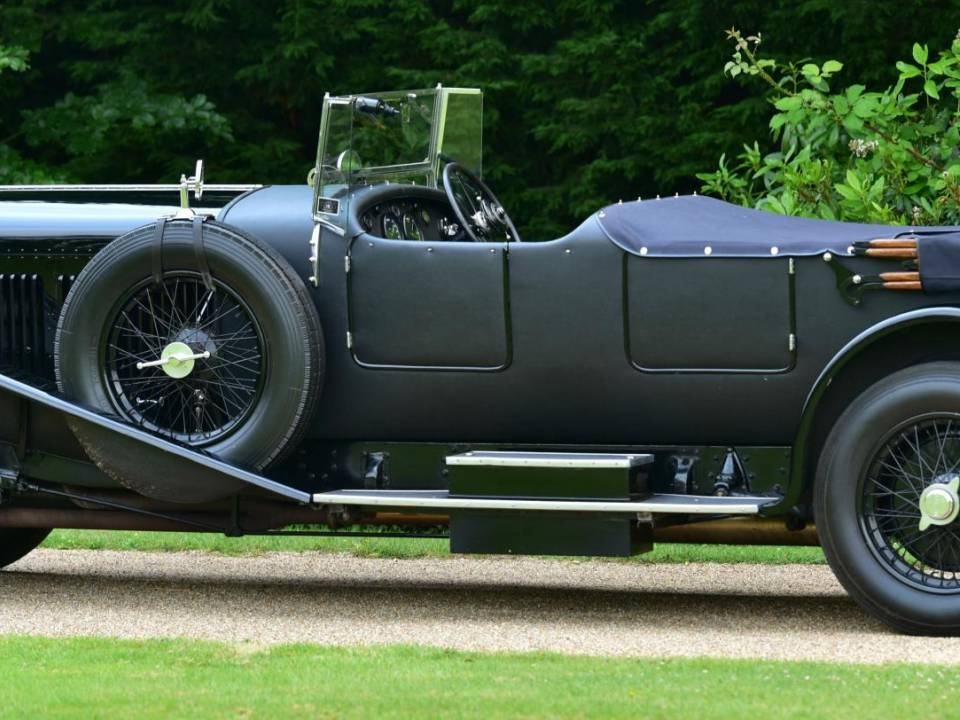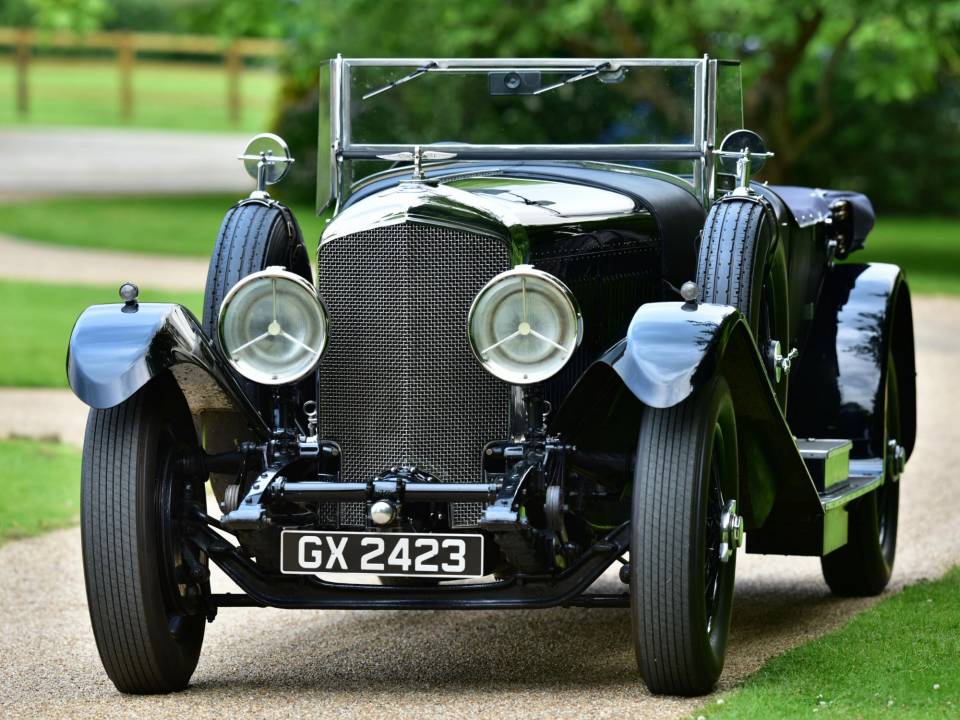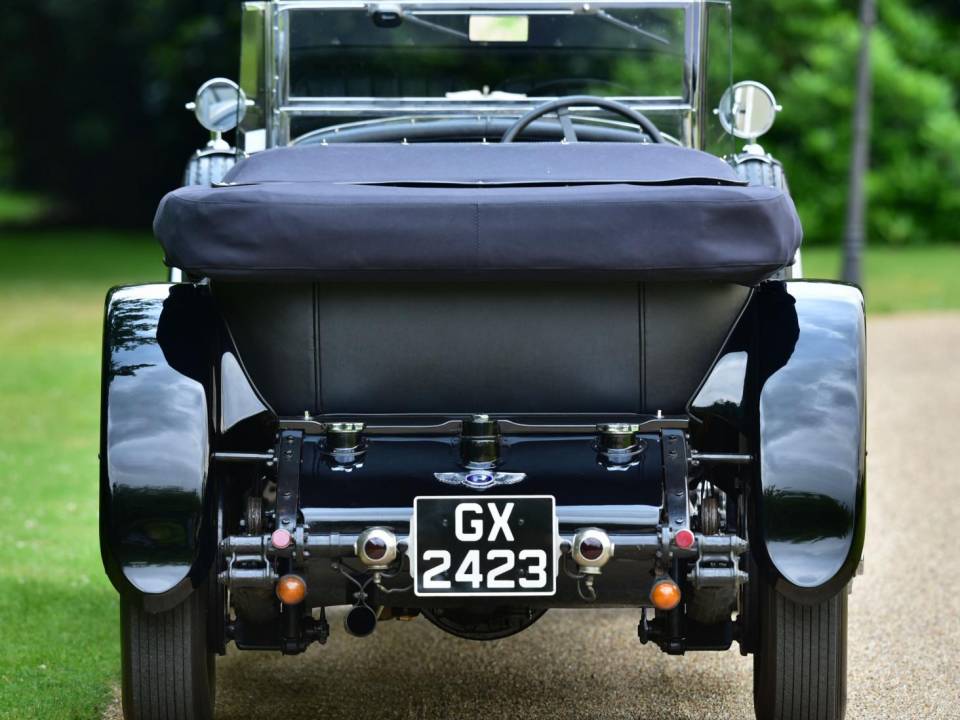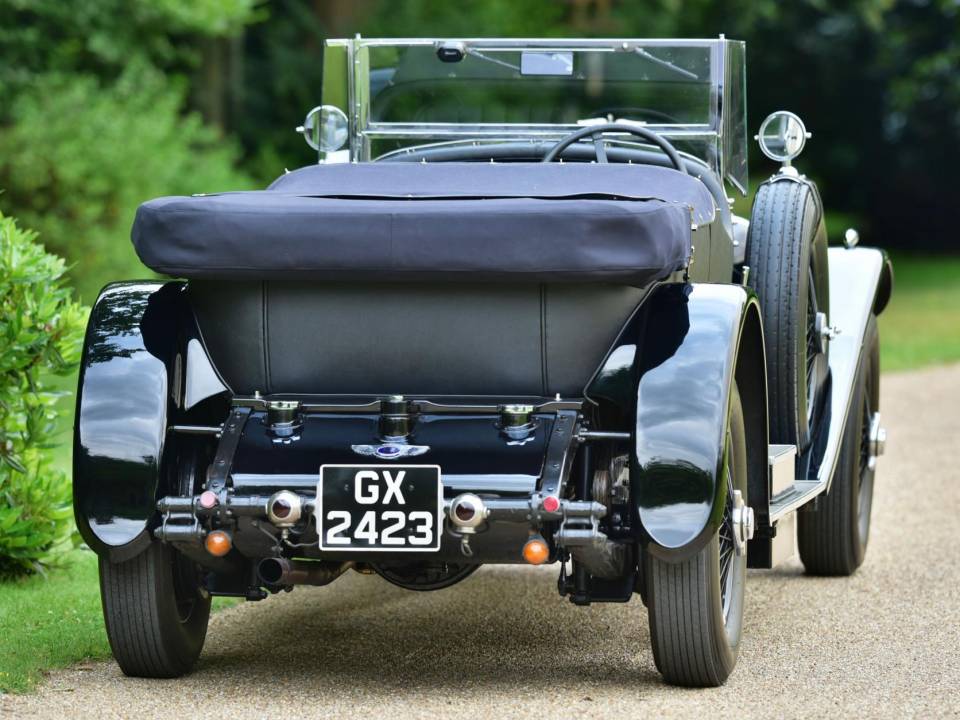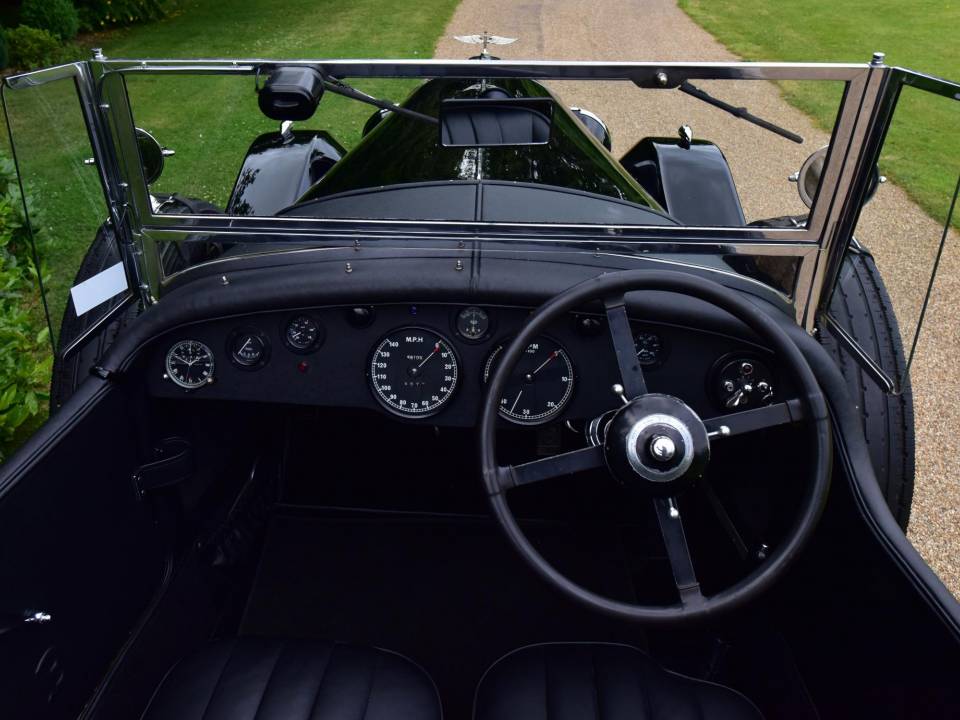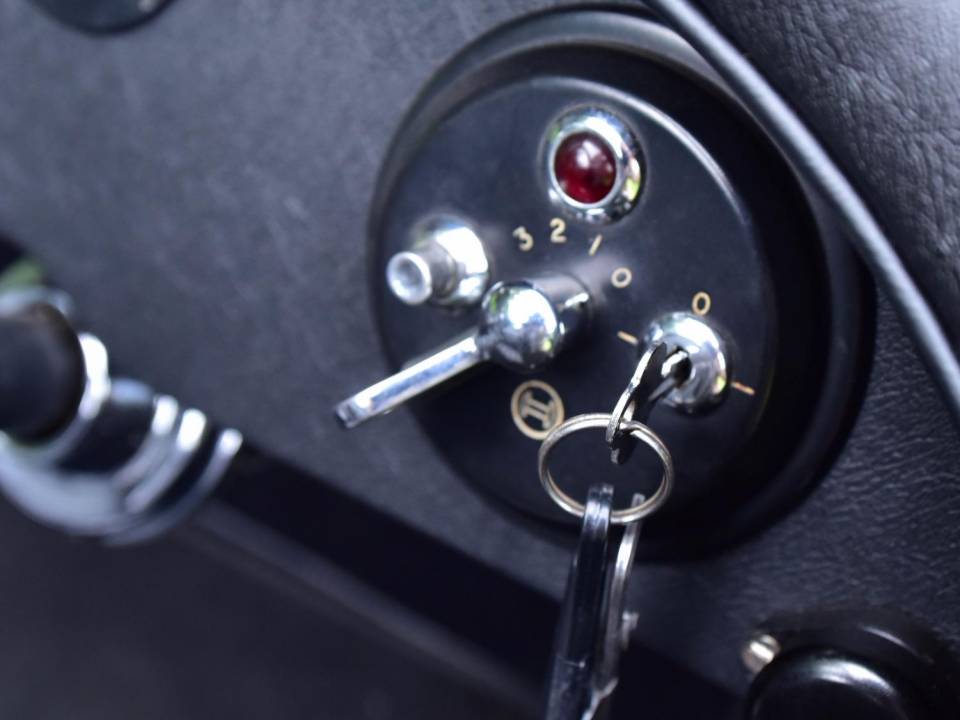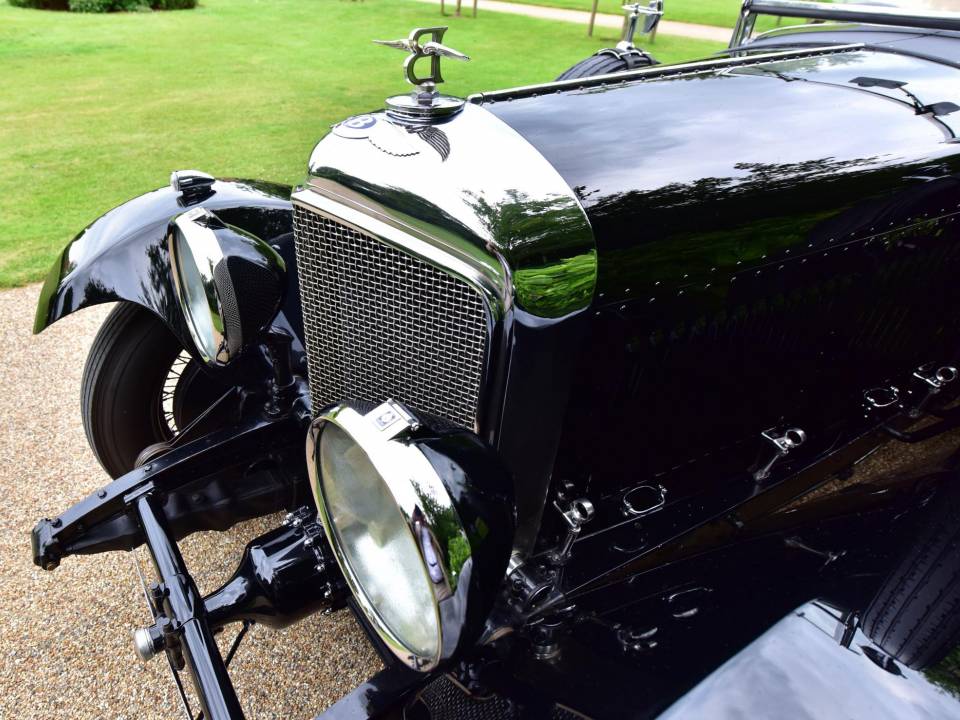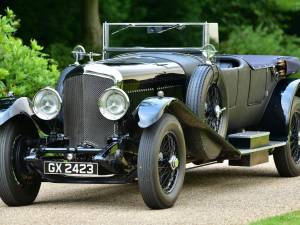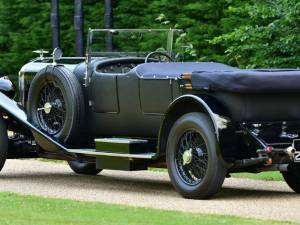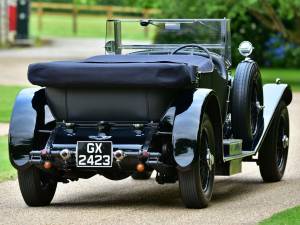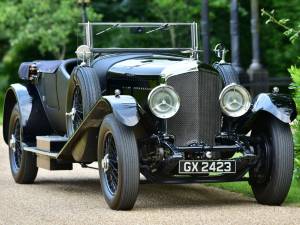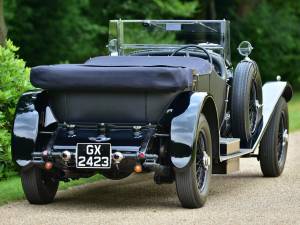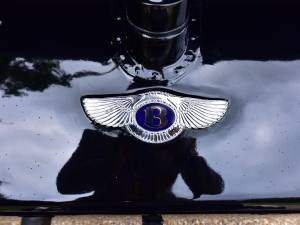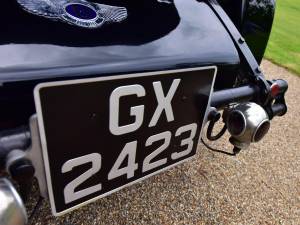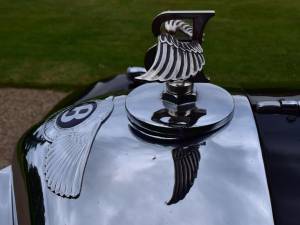1931 | Bentley 8 Litre
Vandenplas Style Tourer
Vandenplas Style Tourer
Vandenplas Style Tourer
Description
1931 Bentley 8 Litre Vandenplas Style Tourer
Chassis number YM5045
Registration number: GX2423
One of a Pair of similar 8 litres we have in stock.
A magnificent completely matching numbers Vanden Plas Style Tourer. This car started life as a Freestone & Webb Saloon & was delivered new to Major CH Stevens, and owned by him until 1949. In 1972 The car received its current body built by well known Marque Specialists Elmdown Engineering. At the same time a full engine rebuild was undertaken.
Under its most recent ownership it has been to noted eperts VBE restorations who have performed close to £50,000 in recent works. This has included:
Remove body, clean chassis and bolt check. Touch up chassis paint were necessary.
Cover whole body with new wadding and calico and then new black Everflex.
Re upholster complete interior with Ingelston Black Hide.
Fit new Wilton carpets bound in leather.
Cover dashboard in black Everflex
Fit body and wings back to chassis.
Renovate headlamps and re-chrome rims.
Fit modern spin on oil filter
Fit new electric fans
Fully service car and carry out anything that needed doing.
A full inspection was carried out by VBE Restorations prior to sale by the last owner:
Inspection report of 8 Litre Bentley Chassis No YM5045
This report covers the mechanical inspection and road test of the 8 litre Bentley, chassis No YM5045 carried out by VBE Restoration the week beginning the 13th of April 2015.
The first check was of all the numbered components which are as follows:
Current registration No: RB327 (New South Wales) Chassis No: YM5045
Engine No: YM5045
Front axle No: YM5045
Rear axle No: YM5045
Steering Column: YM5045 Differential housing: YM5045
Body: Replica VDP open touring body
The inspection of the numbered parts confirmed that all major mechanical components are as supplied by Bentley Motors and correct to the car. Although some of the minor ancillary parts have been changed, this detracts very little from the overall originality of the Bentley made components.
The Body, although not original, is made to a high standard and well proportioned considering the size of the car. It is believed to have been made by Elmdown in 1971, a well known Bentley marque specialist. The body is covered in a Vinyl with traditional style leather interior trim.
The Tonneau and hood bag are reproduced in an Everflex type material. The dashboard contained some of the original instrumentation including the switch plate but a large speedometer and tachometer have been fitted as well as some later period switches.
The rather novel fitment of windscreen washers, have also been introduced. The steering column, hand controls and centre are all original but the steering wheel is not.
A thorough mechanical inspection and road test revealed the following:
Engine
All major engine castings appear to be the original items. (NB. As in all 8 litres the nonferrous casting are magnesium) The original crankshaft damper has been replaced by what appears to be a modern viscus unit (a sensible modification) and the original damper cover is missing. The engine retains its original twin SU carburettors and linkages, however the Autovac is not present and has been replaced by a pair of twin SU fuel pumps. The original Delco Remy distributer remains fitted to the N/S of the engine whilst the O/S Bosch magneto has been replaced with another Delco distributor. The original fan has been replaced a modern electric item and the same applies to the horn. The starter motor is the original Bosch type.
The engine started easily and ran quietly. On the road, the performance is impressive through the range. Prodigious torque is accompanied by an impressive roar from the exhaust. There are no significant rattles or vibrations from the engine. The powered delivery is smooth and the fuelling and ignition is reasonably well set up.
Transmission
The original plate clutch and F type gearbox is in place, as is hypoid final drive unit which is leaking some oil from the front seal. The axle ratio is indicated as 14/53 stamped into the differential nose piece.
Driving the car, the clutch action is relatively light with the correct amount of free play and there is no sign of slip. The gearbox is quiet and the shift is smooth and effortless as to be expected with the F type constant mesh gearbox. The final drive is near silent.
Chassis
The chassis construction is as it left the factory, the rivets appear to be tight and there is no evidence of damage or repairs. None of the crossmembers have been welded in as we have seen on other vintage Bentleys. The fuel tank has been rebuilt and now has 2 filling points on the top face, one either side. The bulkhead is original and bears the original Bentley Motors plaque.
Steering and suspension
All steering components appear to be original with the exception of the steering wheel. The original hydraulic shock absorbers have been replaced with a reproduction friction type. Also the one shot lubrication system has been replaced and Techalamit oilers have been fitted to all the suspension and steering points that require regular oiling.
The steering was surprisingly light and the car felt well placed on the road. Despite the soft comfortable ride it was stiff enough, allowing confidence to drive briskly.
Brakes
The car retains all its original braking equipment, including the drums, levers and compensator shaft, but most importantly the Dewandre servo unit. During the test drive the brakes performed impressively, they are well adjusted with a progressive servo action.
Conclusion
Overall YM5045 is a superb car which drives extremely well and requires no major work. The body, although not original, is well made and far more usable than it’s original heavy coachwork. With the exception of the Autovac and the bosch magneto, the car has all of its significant original mechanical components and all major castings are correctly numbered. The car is a fantastic example of an 8 litre Bentley and has the performance to go with it.
Tim Cresswell
MD VBE Restorations
1931 Bentley 8-Litre
5 / 16
Bentley's monster 8-litre proves that cubic inches and high-concept design work, no matter how old the car
BENTLEY 1931
There’s something very special about driving a vintage Bentley.
Big and brutish, they have a special quality that stands them apart. From its very beginnings Bentley has featured large capacity engines producing prodigious levels of torque at low rpm, offering effortless performance and endurance.
Even today that, more than any other trait, is the defining characteristic of the marque. This core brand value harks back to Walter Owen Bentley’s apprenticeship with the Great Northern Railway where he worked for a time as the fireman on the footplate of the great Atlantic high-wheeled and extremely powerful express trains.
Bentley -8-Litre --039-500
Many years later he would write in his autobiography: "I was fascinated by the feeling of power as we pulled out of Kings Cross, up the steep gradients and tunnels of North London, up the steady grind for another eleven miles to Potters Bar and by the sudden irresistible surge of acceleration when the track levelled off and fell away. There is nothing I know to compare with the sensation of rushing through the night."
As we pull away from the kerb in a superb example of WO’s last defining classic, the awesome 1931 8-litre, I marvel at the feeling of enormous power and immense torque.
One of three in Australia from a production run of just 100 cars, this is indeed a special car.
Described by The Autocar as "motoring in it highest form" the 8-litre arrived on the motoring scene at the worst possible time. Unveiled at the London Motor Show on September 19, 1930 this upper crust model arrived just as the Great Depression was taking its toll on luxury cars. With an exalted chassis price of 1,850 pounds the 8-litre did not sell quickly enough to improve Bentley’s financial situation and, less than nine months after its introduction, Bentley Motors was placed in receivership.
Today, 78 8-litres are known to survive worldwide, with many having had their original saloon bodies replaced by replica tourers. This is the case with 1931 chassis YM5045 that started life with a Freestone and Webb Saloon body.
Bentley -8-Litre --017-500
Delivered new to Major CH Stevens, and owned by him until 1949, it was then purchased by Leyland Motors who used it as a test mule for an experimental diesel engine before selling it on in 1964.
It then passed through several more English owners before being fully restored in 1972 by specialists Elmdown Engineering in Wiltshire, where it received its current Vanden Plas replica Tourer body.
Finally, in 1981, it was purchased by a Sydney Bentley enthusiast, arriving here on the appropriately named SS Prestigious in January 1982.
The 8-litre was built on the foundations of the successful Speed 6 model, perhaps Bentley’s most defining design, which took stunning victories in the 1929 and 1930 Le Mans 24 Hours.
However, the 8-litre was lower in stance with a down-swept chassis frame between the axles, designed to carry some of the most exquisite and custom coachwork from the likes of Barker, HJ Mulliner, Vanden Plas, Gurney Nutting and Corsica. Most were limousine bodies with fewer than 25 fitted with open Tourer coachwork.
Bentley -8-Litre --031-500
Buyers had the choice of two wheelbase dimensions, 3700mm or the longer 4000mm on this car, although three more cars were built on a short 3500mm wheelbase.
The large ladder frame chassis with seven cross members is immensely strong, looking like it would weigh a tonne on its own, certainly much heavier than the chassis on the 61/2–litre and Speed 6 models.
The straight-six engine, the only real carryover from the 6.5 litre, features a one-piece iron block with non-detachable cylinder head with a single overhead camshaft and four valves per cylinder. Dual ignition was by magneto and coil although in this case dual coils have been fitted.
Bentley cast the massive crankcase in Elektron, a magnesium alloy, offering a considerable saving in weight over the more conventional aluminium alloy.
Such was the output that Bentley guaranteed it could power the heaviest bodies to 104mph (167km/h). It was nevertheless flexible enough to travel unstressed from 10km/h to 167km/h in top gear despite a final drive ratio of 3.5 to 1.
However, keeping the fuel up to the furnace at high speed via twin SU carbies was its biggest problem, especially on a hot day, and most 8-litres today have had their vacuum tank bypassed by the installation of twin SU electric pumps.
The follon
wing is an Excerpt from a magazine road test perfomed on this particular car:
Bentley -8-Litre
I’ve been fortunate to drive all of WO Bentley’s different models, including a shorter chassis 8-litre; however none has been as enjoyable to drive as this one
A big car by any measure, it sits the driver roughly amidships of an overall length of a little more than 5.4 metres. Some idea of its long wheelbase can be measured by the fact it has a turning circle of 17 metres.
Bentley employed a single plate dry clutch which I half suspected would be touchy given the output it has to handle, however the pedal pressure is surprisingly light and the take up smooth and snatch-free.
Likewise, the worm and sector steering, despite a relatively fast ratio by vintage standards, does not unduly load up at slow speed and is relatively easy to handle. On the open road the 8-litre is a really easy car to drive, although in suburban traffic you become very conscious of its weight and overall dimensions.
The gearbox is perhaps the biggest challenge, not the easiest vintage Bentley shift, and it takes a little time to become familiar with road speed and engine revs before you can execute a clean change.
The engine and gearbox are each mounted at three points on rubber and it isolates a lot of mechanical vibration with in the car. The gearbox, again cast in Elektron, differs from other WO Bentley designs in that it is split vertically, said to allow for the fitment of bearings adjacent to each gear so as to handle the massive torque. What impresses is the refinement the chassis offers given its stunning performance capability. There is no fuss or bother in the way it performs and, compared to an 8-litre Hispano-Suiza, it is far quieter in the drivetrain and goes about its business in a far more subtle way.
It’s somewhat docile on a light throttle, yet give the car its head and it responds with a stirring performance. On the open road at a steady 110km/hour the engine feels like it's just ticking over but instantly responds to a boot full of throttle with startling acceleration.
Poor brakes can be the Achilles heel on many vintage cars – not on the 8-litre however and here Bentley employed a Dewandre vacuum-servo system with his own compensating device working on generous 400mm drums. They are so powerful you could mistake them for a modern hydraulic system, have great pedal feel, and they give you confidence moving such a heavy car in and around traffic.
Maybe it was WO Bentley’s apprenticeship with the Great Northern Railway, in any case the instrumentation on the 8-litre is a distinct throwback to the large steam gauges on early locomotives.
Few vintage cars today can offer the performance, exhilaration and driveability of an 8-litre Bentley. Whilst it doesn’t have the Speed 6’s racing heritage and Le Mans 24 Hour association, the 8-litre is today one of the world’s great collector cars, witnessed by its amazing survival rate.
Office 01375 379719
Richard Biddulph 07967 260673
We accept Credit/Debit Cards.
Part Exchange welcome.
Weekend & evening viewings OK.
Viewings by appointment :
Prestige House.
9 Globe Industrial Estate,
Grays, Essex, RM17 6ST
Vehicle details
Vehicle data
- Make
- Bentley
- Model name
- 8 Litre
- First registration date
- Not provided
- Year of manufacture
- 1931
- Mileage (read)
- Chassis number
- YM5045
- Engine number
- Not provided
- Gearbox number
- Not provided
- Matching numbers
- Not provided
- Number of owners
- Not provided
Technical details
- Body style
- Convertible (Tourer)
- Power (kW/hp)
- 162/220
- Cubic capacity (cm³)
- 7983
- Cylinders
- 6
- Doors
- 4
- Steering
- Right (RHD)
- Gearbox
- Manual
- Gears
- Not provided
- Transmission
- Rear
- Front brakes
- Drum
- Rear brakes
- Drum
- Fuel type
- Petrol
Individual configuration
- Exterior color
- Black
- Manufacturer color name
- -
- Interior color
- Black
- Interior material
- Others
Optional equipment
- Rechtslenker
Condition, registration & documentation
- Has Report
- Condition
- Book inspection report
- Registered
- Ready to drive
Location

Vintage & Prestige Fine Motor Cars
Richard Biddulph
Globe Industrial Estate 9
RM17 6ST Grays
🇬🇧 United Kingdom







